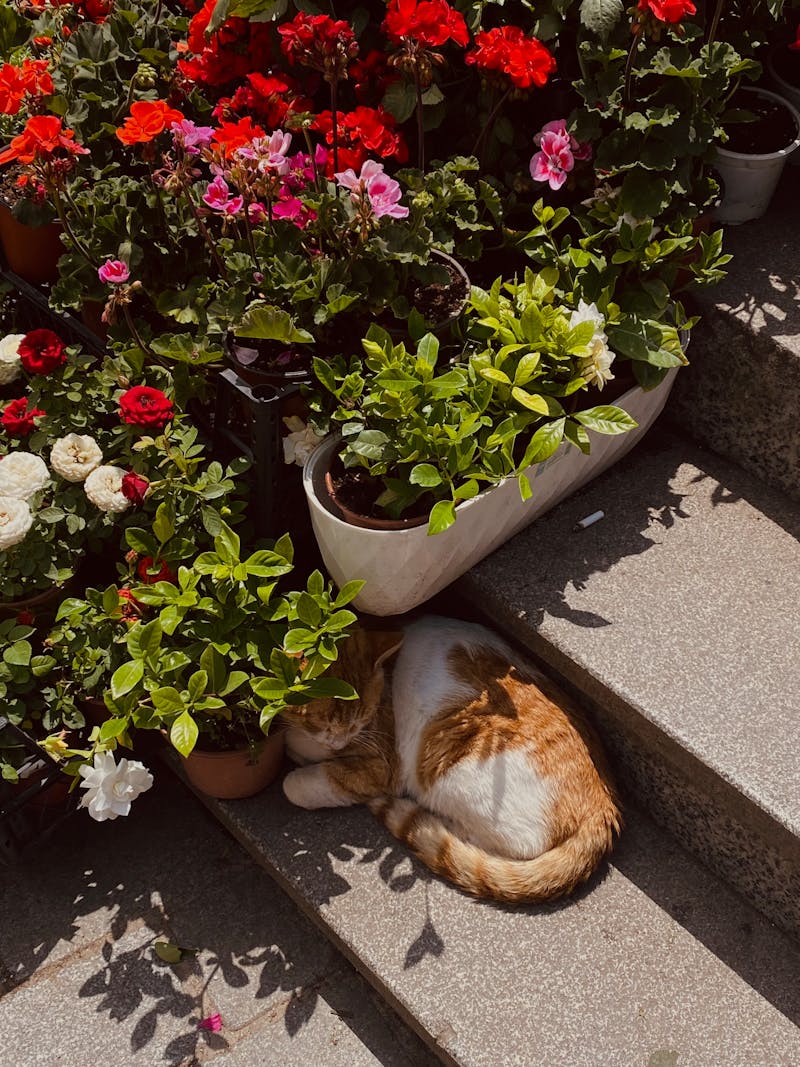Cat Vomiting: Understanding What’s Normal—and What’s Not

Cat Vomiting: Understanding What’s Normal—and What’s Not
Vomiting is a common issue in cats and can be caused by a variety of factors. While occasional vomiting may not be a cause for concern, persistent or severe vomiting can indicate underlying health issues that need attention. Understanding what is normal and what is not when it comes to cat vomiting can help you take appropriate action to keep your feline friend healthy.
What Is Considered Normal Vomiting in Cats?
1. Occasional Hairballs
- Frequency: It is relatively normal for cats to vomit up hairballs occasionally, especially for long-haired breeds or those prone to excessive grooming.
- Appearance: Hairball vomit is typically composed of hair mixed with a small amount of clear or yellowish liquid. It may appear as a cylindrical mass or a small pile of hair.
2. Eating Too Quickly
- Behavior: Cats that eat too quickly might vomit their food shortly after eating. This is often due to overeating or swallowing air.
- Appearance: Vomit in these cases is usually undigested food and may resemble the food your cat just ate.
3. Minor Digestive Upset
- Occasional Upset: Sometimes, a cat may vomit due to minor digestive disturbances, such as eating something that doesn’t sit well with them.
- Appearance: The vomit may contain partially digested food or bile. This usually resolves on its own within a day or two.
When to Be Concerned: Signs of Abnormal Vomiting
1. Persistent Vomiting
- Frequency: Vomiting more than once a day or more than once in a week is concerning and warrants veterinary attention.
- Duration: Ongoing vomiting over several days indicates a more serious issue that needs investigation.
2. Severe Vomiting
- Volume: Large amounts of vomit or repeated vomiting can lead to dehydration and other complications.
- Appearance: Vomit that contains blood (red or coffee ground-like) or has a distinctly unusual color or odor should be evaluated by a vet immediately.
3. Associated Symptoms
- Loss of Appetite: A decrease in appetite or refusal to eat can be a sign of underlying health issues.
- Lethargy: Excessive tiredness or weakness along with vomiting is concerning.
- Diarrhea: Vomiting accompanied by diarrhea can indicate gastrointestinal problems or infections.
- Weight Loss: Noticeable weight loss over time, along with vomiting, should be addressed promptly.
4. Behavior Changes
- Strange Behavior: If your cat exhibits unusual behavior such as hiding, aggression, or vocalizing in distress, it may be related to their vomiting.
Common Causes of Vomiting in Cats
1. Gastrointestinal Issues
- Gastritis: Inflammation of the stomach lining, often caused by dietary indiscretion, infections, or toxins.
- Intestinal Obstruction: Blockages due to ingested foreign objects or hairballs can cause vomiting and discomfort.
- Inflammatory Bowel Disease (IBD): Chronic inflammation of the gastrointestinal tract can lead to vomiting and other digestive issues.
2. Dietary Causes
- Food Intolerance: Sensitivity to certain ingredients or sudden changes in diet can cause vomiting.
- Toxins: Consumption of toxic plants, chemicals, or spoiled food can result in vomiting and other serious health problems.
3. Systemic Diseases
- Kidney Disease: Chronic kidney disease can lead to nausea and vomiting as the kidneys fail to filter waste properly.
- Liver Disease: Liver dysfunction can cause vomiting along with other signs such as jaundice and lethargy.
- Diabetes: Uncontrolled diabetes may cause vomiting due to fluctuating blood sugar levels.
4. Infections and Parasites
- Viral or Bacterial Infections: Infections like feline panleukopenia or bacterial gastroenteritis can cause vomiting.
- Parasites: Intestinal parasites such as worms can irritate the digestive tract and lead to vomiting.
5. Stress and Behavioral Issues
- Stress: Environmental changes, such as moving to a new home or changes in routine, can lead to stress-induced vomiting.
- Eating Habits: Some cats may vomit due to behavioral issues, such as eating non-food items or overeating.
Diagnosing the Cause of Vomiting
1. Veterinary Examination
- Physical Exam: Your veterinarian will conduct a thorough physical examination to assess your cat’s overall health and identify any immediate issues.
- Medical History: Providing information about your cat’s recent behavior, diet, and any other symptoms will help in diagnosing the cause.
2. Diagnostic Tests
- Blood Tests: Blood tests can help identify underlying conditions such as kidney or liver disease, infections, or diabetes.
- Imaging: X-rays or ultrasound may be used to identify obstructions, tumors, or other abnormalities in the gastrointestinal tract.
- Fecal Examination: Checking for parasites or gastrointestinal infections through a fecal exam can be necessary.
3. Specialized Testing
- Endoscopy: In some cases, an endoscopy may be performed to visually inspect the gastrointestinal tract and collect biopsies if needed.
- Urinalysis: Testing your cat’s urine can provide additional information about kidney function and other systemic issues.
Treatment Options for Vomiting in Cats
1. Addressing Underlying Causes
- Medications: Depending on the cause, your veterinarian may prescribe medications to treat infections, reduce inflammation, or manage systemic diseases.
- Dietary Changes: Switching to a specialized diet or eliminating problematic foods can help manage dietary-related vomiting.
- Surgery: In cases of intestinal obstruction or foreign objects, surgical intervention may be necessary.
2. Supportive Care
- Hydration: Ensuring your cat stays hydrated is crucial, especially if vomiting has led to fluid loss. Your vet may recommend oral or intravenous fluids if needed.
- Nutritional Support: Providing a bland diet or easily digestible food can help your cat recover and prevent further gastrointestinal upset.
- Rest: Allowing your cat to rest and recover in a quiet, comfortable environment can aid in their overall recovery.
Preventing Vomiting in Cats
1. Maintain a Consistent Diet
- Stable Diet: Feed your cat a high-quality, balanced diet and avoid sudden changes in their food. Gradually transition to new foods if needed.
2. Monitor Eating Habits
- Slow Feeding: If your cat eats too quickly, consider using a slow feeder or food puzzle to prevent overeating and reduce the risk of vomiting.
3. Regular Vet Check-Ups
- Health Monitoring: Schedule regular veterinary check-ups to monitor your cat’s health and catch potential issues early.
4. Avoid Toxic Substances
- Safe Environment: Keep harmful substances, such as toxic plants, chemicals, and spoiled food, out of reach of your cat.
5. Stress Management
- Reduce Stress: Create a stable and comforting environment for your cat to minimize stress and potential vomiting related to behavioral issues.




